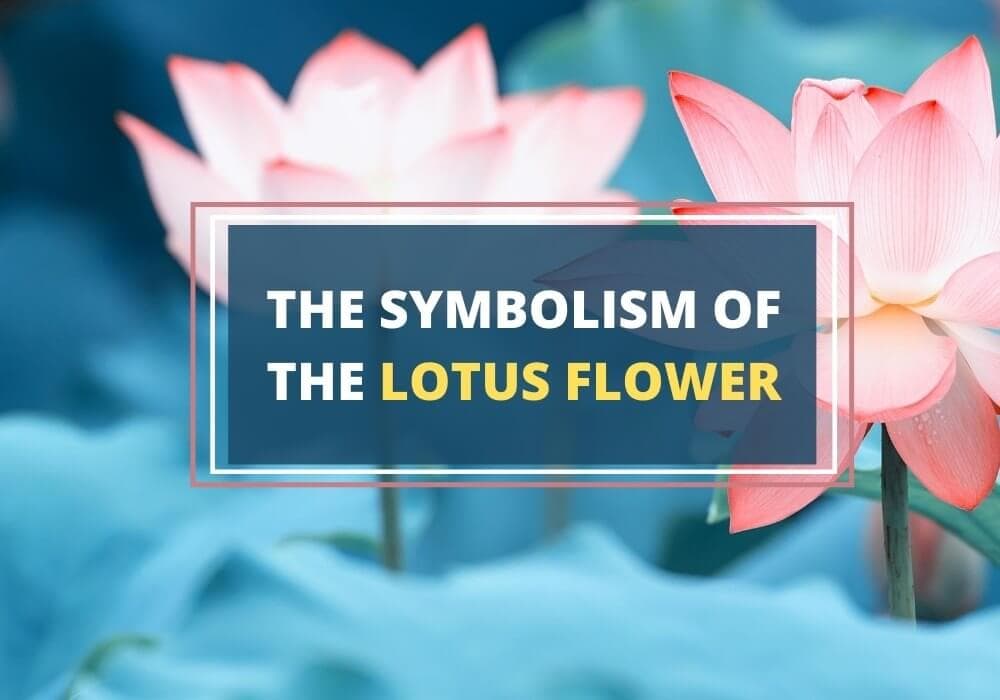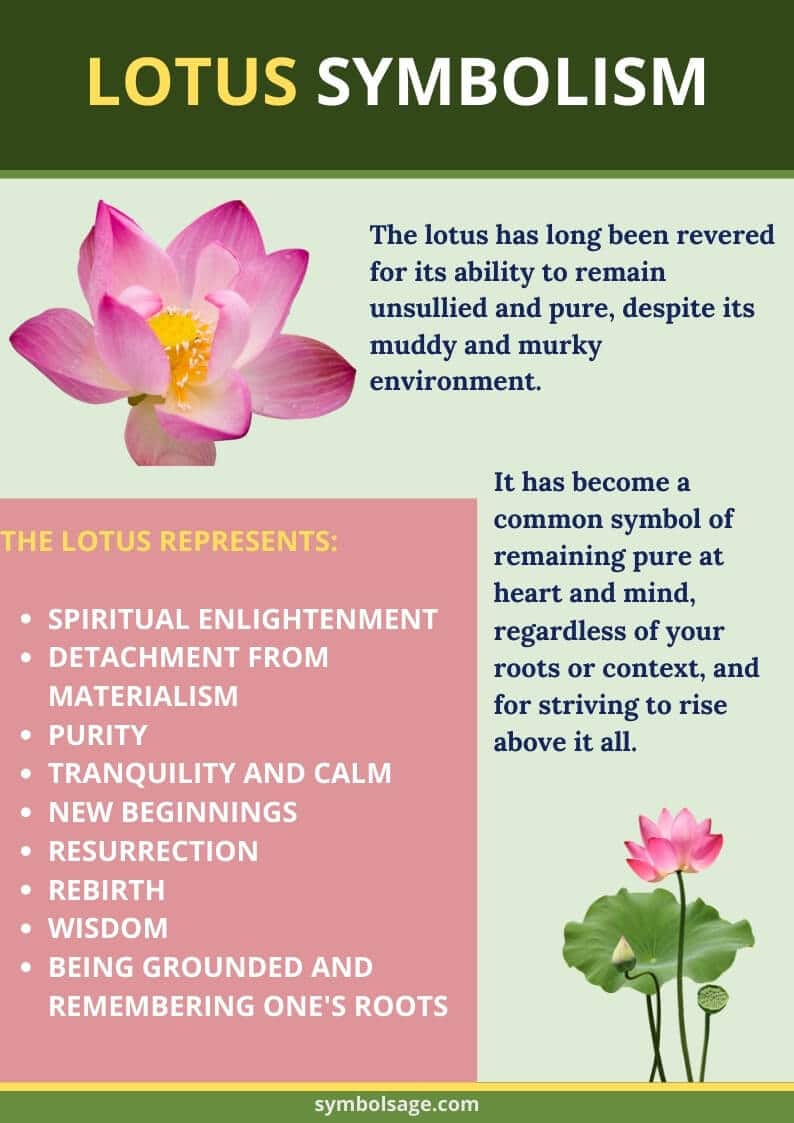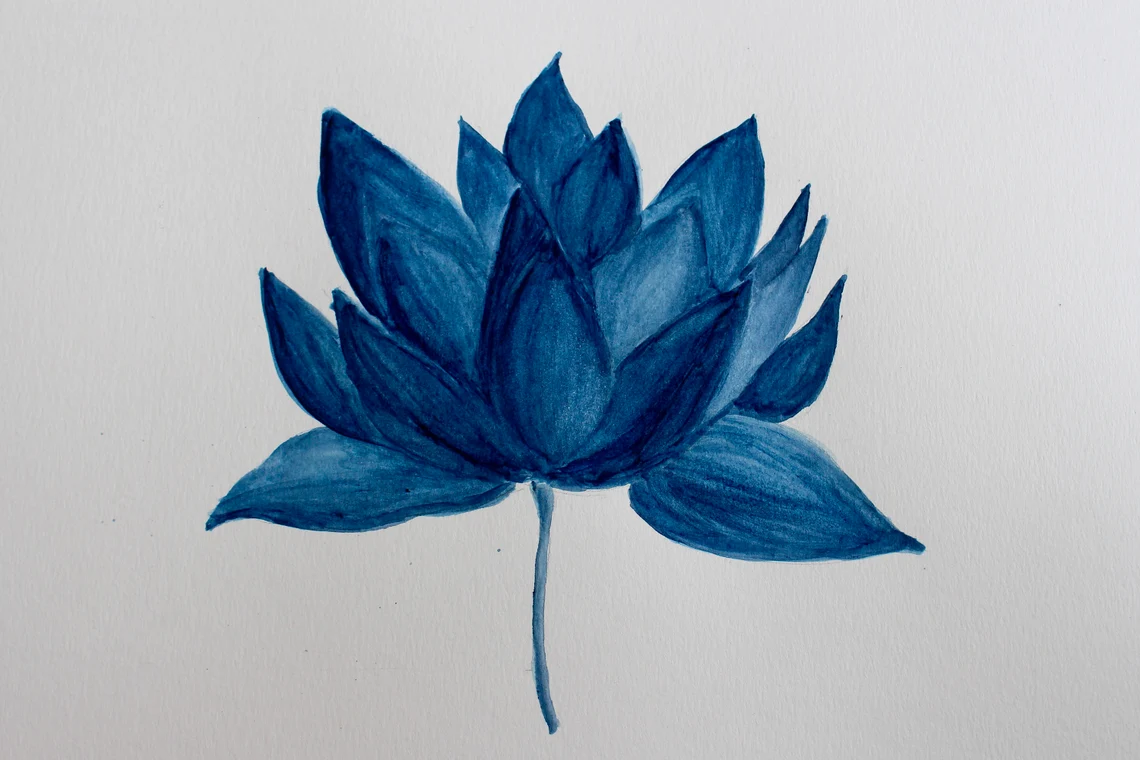
Table of Contents
Lotus flowers are beautiful flowers that are commonly associated with purity, inner strength and tranquillity, but its symbolism extends beyond that. The flower plays a symbolic role in various religions such as Hinduism, Buddhism, Sikhism, and Jainism. Given its deep symbolic meanings and connection to religion, the lotus flower is considered one of the most sacred plants. Here’s a closer look at the lotus.
Origins of Lotus Symbolism
Lotus flowers were symbolically depicted as early as Ancient Egypt, where white and blue lotuses are more common. In Egypt, the flower was known as Seshen and was associated with Egyptian gods. Because of the way in which the lotus emerged from the water, followed the movement of the sun and then closed back up and returned into the water, only to repeat the process the next day, the lotus was associated with the sun god, Ra.

The Ancient Egyptians believed that lotuses were symbolic of creation, rebirth, strength and power. Perhaps, for this reason, during childbirth Egyptian women tended to wear lotus amulets with a picture of Heqet, a goddess of fertility. The lotuses were present in art, hieroglyphics, and paintings to represent fertility, a new beginning, and purity.
Other historical references to the lotus can be found in Ancient Greece and in Indian religions. In Ancient Greece, the flower represented innocence, modesty, and purity.
References to lotuses in Hinduism can be traced back to at least 1400 BC through Vedic texts that depict Hindu gods holding or standing on lotuses. Early references can also be found in the Buddhist religion, and the Buddha is often depicted sitting on a lotus.
Symbolism of the Lotus
The meanings behind the flower relate to the symbolism of the lotus growing out of muddy waters. The flowers’ roots anchor it in the mud, but the flower rises above its murky environment, blossoming open one petal at a time. Based on these unique growing conditions, the lotus flower has come to have many symbolic meanings.

1. Spiritual Enlightenment
The lotus represents spiritual enlightenment. Regardless of its dirty environment and the muddy water it’s rooted in, the lotus rises above it all to bloom in beauty, facing the sun. This is symbolic of overcoming the material world and emerging from the muddy waters of suffering to reach spiritual enlightenment and wisdom.
2. Detachment
The flower symbolizes detachment as the lotus detaches itself from the water and filth that sullies its environment. This symbolism serves as a reminder to separate ourselves from things that could sully our soul and to instead focus on the things that matter, such as wisdom, relationships and spiritual enlightenment.
3. Resurrection & New Beginnings
Lotuses also symbolize resurrections and new beginnings. The flower emerges in the morning, only to close up at night and disappear into back into the water. in the morning, a new blossom remerges and continues the cycle. This representation makes the lotus a common flower at funerals. This is also why the flower was popular in Egyptian symbolism.
4. Purity & Cleanliness
The lotus represents purity and cleanliness, as it’s able to emerge from the murky waters pure and unsullied. In particular, the flower represents the purity of the human soul, as the center of the flower is never tainted by its journey, nor is it by the daily exposure to the murky water.
The lotus flower blooms slowly one petal at a time, which is similar to the gradual steps required to reach spiritual enlightenment. In this sense, the lotus is a symbol of personal progress. Regardless of the color of the petals, the middle is typically yellow, which represents the goal of enlightenment.
5. Nature & Womanhood
The lotus has also been associated with nature and womanhood. Some representations use a lotus bud to symbolize a virgin. In contrast, a fully grown flower is a mature, sexually experienced female.
6. Remaining True to Yourself
The lotus is also an excellent example of remaining true to yourself and who you are. Regardless of the murky waters and environment, the lotus remains grounded, proud of what it is and yet still a part of its environment. It beautifies it and makes it better simply by being there.

Lotus Symbolism in Religion
The lotus is a religiously significant symbol, especially for Eastern religions. While many of the symbolic meanings are similar, each religion has its own associations as well.
1. Lotus Flower in Buddhism
Buddhists see the lotus as a representation of life. The mud is the suffering, challenges, and obstacles we face, and the flower symbolizes overcoming those obstacles. This growth can be viewed as progressing towards a state of purity or the path to enlightenment. Also related to life, Buddhists see the flower as representing rebirth and reincarnation. The flower also signifies purity, spirituality, and self-cleaning.
The Sutra of the Lotus Flower of the Wonderful Law is an essential Buddhist scripture that highlights the teachings of Buddha about the lotus. The lesson states that without mud, there can be no lotus, but the lotus remains untainted by the mud. This scripture serves as a reminder that suffering and happiness are not mutually exclusive. Without one, you cannot have the other.
2. Lotus Flower in Hinduism
Within Hindu symbolism, the lotus is associated with prosperity, fertility, and beauty. The lotus is also associated with a number of Hindu gods and relates to the sacred Padma lotus. The Padma is the part of the soul that drives people towards spiritual enlightenment even through struggles. This drive is similar to the manner in which the lotus flower pushes through the mud and muck to reach the surface.
The lotus is associated with several Hindu gods, including Lakshmi, Brahma, and Vishnu, who is known as the Lotus-Eyed One and is known for beauty and purity. Other gods are depicted with lotuses in artwork because of the association with purity and divinity.
Another association given to the lotus, according to some followers of Hinduism, is creation. Similar to how the lotus blooms with sunlight, Hindus believe the world bloomed into creation in the presence of consciousness.
3. Lotus Flower in Sikhism
The lotus flower is used as an analogy for how to live life, as explained by Bhai Gurdas Ji, an influential Sikh figure and writer. These writings are referred to as keys to understanding Gurbani and grasping the basics of Sikhism.
Accordingly, just as the lotus remains unsullied in the water, you must stay unaffected by the evils of the world. Another important point is the idea that as the lotus loves the sun and blooms for it, so will the person who, through loving devotion, know the Lord.
Those are just two of the many references he makes to the lotus flower throughout his teachings. It is mentioned an estimated 420 times as representing the human soul.
Other meanings of the lotus in Sikhism can be considered the same as the general symbolism of the lotus. However, it is worth noting that the lotus flower is not commonly used as a Sikh symbol today.
4. Lotus Flower in Jainism
The lotus is not a main religious symbol of Jainism, a faith centered around self-help, but it is an identifying symbol for some Jains. The blue lotus is the symbol of Nami, the 21st Jain. A red lotus represents the 6th Jain, Padmaprabha.
What Do Different Lotus Colors Mean?

The lotus flower naturally comes in a variety of colors. While the Hindu religion mainly uses the white lotus in its depictions, Buddhism uses a range of lotus colors, each with its symbolic meaning.
- Blue represents the importance of spirit over knowledge. It also represents common sense, wisdom, and knowledge.
- White symbolizes Bodhi, which is a state of enlightenment. White lotuses are also known as the womb of the world and represent the purity of the mind and soul.
- The eight-petal lotus is shown as purple and represents Buddha’s eightfold path to the noble truth, also known as the path to self-awakening. Because of its association with the path, the purple lotus is viewed as mystical and spiritual.
- Red represents the heart, so the red lotus symbolizes pure love and compassion.
- The most important lotus, the true lotus of Buddha, is depicted as pink in color. Stemming from this title, the pink louts represents the history and essence of Buddha.
- When true spiritual enlightenment has been achieved, it is represented by the gold lotus.
Lotus in Jewelry and Fashion
Today the lotus remains one of the most popular symbols in jewelry and fashion. It’s often used in pendants, rings, bracelets and earrings, or simply kept as a charm. The image can be stylized and represented in many ways, including as an open bloom or a closed bud. It’s also popular in Buddhist or spiritual jewelry.
Lotus jewelry also makes a great gift idea:
- As a gift to someone coming of age, it’s a reminder to stay grounded and true to oneself, while ever striving upwards.
- For someone going through a difficult period in their life, the lotus is a symbol of overcoming adversity and hardship, while still keeping one’s spirit intact.
- As a romantic gift to a loved one, the lotus represents the tenacity to hold onto your relationship and the willingness to grow together.
- The lotus symbol is also popular in tattoos and clothing. Because the symbol doesn’t belong to any one group or faith, it’s seen as a universal symbol that holds meaning to everyone.
Wrapping Up
The lotus flower is a beautiful, powerful symbol. The many meanings and religious connections of the lotus make it an excellent choice for artwork, jewelry, clothing and as a decorative motif.
While the symbolism of the lotus is rooted in several religions, the symbol has transcended this to become universal and can be sported by anyone, regardless of their religious affiliation.
After all, no one can lay claim to the lotus, one of the most beautiful and symbolically rich flowers of the natural world.








